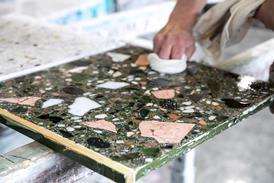Smaller ECA and HVCA firms are frequently in a direct contractual relationship, whether the client is a public sector body such as a local authority, or a private client who might be a private householder or a large firm.
In such cases the m&e contractor may employ a builder to do the limited amount of builders' work which is necessary. Alternatively, the electrical work may be nothing to do with the construction industry but be concerned with controls, computers or other fields of activity. In all of these examples, the m&e contractor is working direct for an end user client and is responsible to that client, either face to face or via a professional engineering consultant. There may be problems, including arguments about workmanship or payment issues but they will be settled by the parties direct.
However, much m&e work, and especially high value work, is not like that. The electrical or mechanical contractor is more likely to be working on a domestic subcontract to a builder.
If the project is a large one, the likelihood is that the builder will have retained a substantial m&e contractor who will have subcontracted work to specialist firms, both on the electrical and the mechanical side.
I was surprised to discover how strongly some members of the JMCG dislike being in this subcontract role, even though they themselves are acting basically as managers and sub-sub-contracting much of the work to smaller firms.
One senior m&e specialist was so critical of main contractors, even though his own firm is part of a main contractors group, that I asked him if he felt that way when working for his own group in a subcontract capacity. He did, and others in the same position felt similarly.
The major m&e contractors must ensure that they are adopting best practice with their own subcontractors
It is depressing if large m&e firms, with strong balance sheets and excellent reputations, are unhappy about working for their own group colleagues. One wonders what the atmosphere at group meetings is like, and whether the directors go to them to defend their own section or to be part of a wider collective decision-making strategy.
It should be the role of the group chairman or chief executive to pull all the strands together. If two large companies within the same group, in contract with another, are still suspicious of each other, the situation is sad. The client will ultimately suffer.
It should be the job of the top managers to knock the heads of both builders and m&e specialists together and encourage them to partner with each other on a constructive and non-adversarial basis. That is not pie in the sky. It is sensible commercial best practice, but it needs a lead from the top. If that lead is not provided, the downstream consequences will be adversarial, to no-one's overall benefit.
The major m&e contractors must also ensure that they are adopting best practice with their own subcontractors. Fairly soon after I became chairman of the JMCG, I was asked to meet representatives of the HVCA's Ductwork Group (including some very large firms) who were unhappy about their relationships with the m&e majors. I described in the May edition of Electrical Contractor how the JMCG came to meet with the Major Contractors Group of the Construction Confederation. There has since been a partnering workshop between the two groups. The JMCG has now had three meetings with the Ductwork Group, and a partnering workshop has also taken place.
The project management skills of the major m&e specialist must be harnessed to the design specialism of the ductwork firm to produce the best engineering outcome. That can best be achieved by a partnering commitment throughout the supply chain, starting with the client and involving builder, professional consultants and all specialist design and construction firms.
Source
Electrical and Mechanical Contractor
Postscript
Sir Michael Latham is the chairman of the ECA/HVCA Joint Major Contractors' Group and chairman of the Joint Industry Board.




















